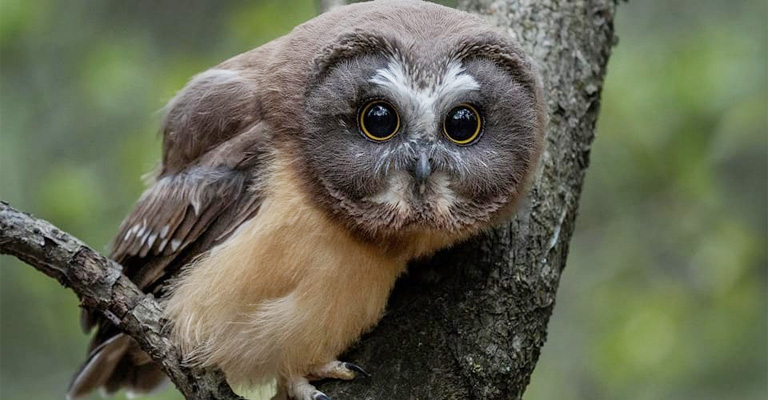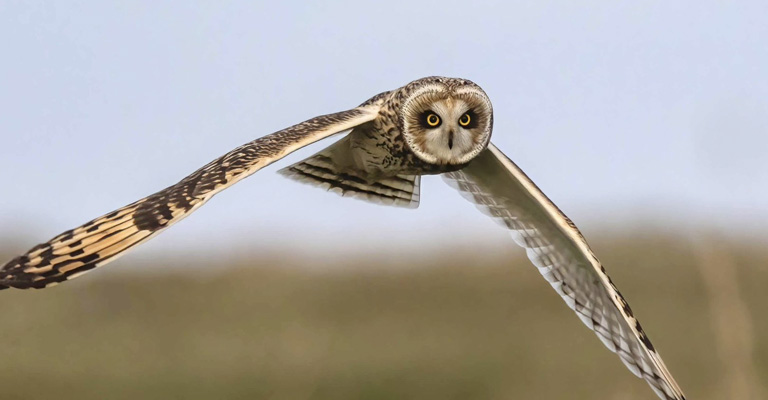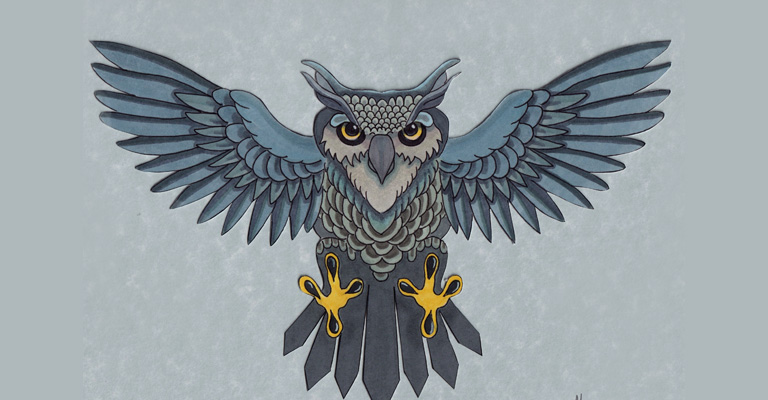As mysterious as owls sound, they have different meanings in different cultures. In Greek, owls are actually linked to the Goddess Athena. She is the goddess of wisdom and strategy.
On the contrary, in some cultures, it’s believed that owls are associated with evil! It is really hard to believe, isn’t it?
We have gathered a set of informative articles on owls, you can find them below. But why are owls associated with evil is something we haven’t explored yet! We will now.
Stay with us till the end of our article and find out the ugly truth beneath.
You might be interested in,
7) Lifespan of Owl: 25+ Species
Take a deep look at why owls hoot. The mysterious hooting sound is already creepy enough to scare the brick out of us in the dark. Plus, the way they rotate the heads at 270° serves the environment!
But why are owls associated with evil? We will find out soon. Before we do, it’s important to learn how they are captivated by different cultures throughout history.

You Should Know,
- On one scale, owls were linked to the Goddess Athena. On another, they were cultivated as poor omens of darkness and doom.
- In American culture, they were referred to as messengers and protectors. Some also believe they carry souls to the afterlife.
- European Folklores said otherwise. They believe owls can foretell death in the family. Owls are the harbingers of mortality and the afterlife. The same goes for Mesoamerican civilizations.
- Besides cats, the Egyptians also perceived owls differently. They believed owls protect the souls of the deceased on their journey to the afterlife.
- In Rome, owls were associated with the goddess Minerva. She was the Roman counterpart of Athena and symbolized wisdom and knowledge. They also believed witches were associated with witchcraft.
- Owls were a symbol of luck and protection in Chinese and Japanese culture. They also believed to ward off negative energy and evil spirits. More story to that below!
- African culture had it differently. They often referred to owls as messengers of secrets and believed to be connected with witchcraft.
- Well, in modern culture, owls are taken differently. They are often referred to as the creatures of night and featured in literature and media, sometimes also used in movies and drama to create a supernatural atmosphere.
Well, now you know how owls are granted in different cultures. Sometimes with kindness, and perhaps sometimes not. Let’s get back to the point where we started.
Why Are Owls Associated With Evil?

The creatures of the night are considered bad omen in Italy, Africa, and some of America too! It is also not unusual that, in some parts of Australia, owls worshipped owls, believing that they represent the souls of women.
Well, you can say, the strange physical appearance of the owls contributes largely to establishing these omens and signatures of luck. The flat face with large eyes may seem creepy and suspicious. It almost resembles a skeleton with feathers.
Plus, owls’ habits raise another controversy in terms of bad omens and signs. They are nocturnal and often hunt at night, which is totally in contrast with most other animals.
They damage the inner organs of their prey with their talons and carry it to their feeding zone. In this way, animals die while flying, and trust us! The method is more brutal than said in words.
Only a few species of owls consume fruits, which are also in small amounts. That makes owls mostly carnivorous. So, it suits the profile of a demonic cult more profoundly!
In short, (1) they are carnivorous, (2) they hunt at night, (3) they are nocturnal, and (4) they make a strange hooting sound. That’s all there to create a shady impression about them. Hence, they are accepted differently in different religions.
Owls As Symbol of Evil

So, why the impression is mixed? We have some points to support the myth. But remember, myths are stories that have been practiced for years.
They are rich in traditional values, and most of them are completely fictional. However, some myths may have a little bit of factual origin.
Witchcraft took a stand in Europe during the mid-1400s. Within a century it became common and most people, especially women were burned at the stake or by hanging.
People believed that religion and magic were closely related to witchcraft and that goes against any religious norms. That’s why witches were hated and burned.
Roman people believed that witches were demonic and they could do anything! They thought witches could take the forms of owls. Later on, they in the form of owls would suck the blood of babies.
Owls in Different Religions
More to this, owls were also granted differently in different religions. In Islam, owls were considered impure or unclean by many Muslim jurists. But that was in the past. Now, it is believed that owls bring no harm and not as a sign of a bad omen.
In Hinduism, the Owl is considered the vehicle of Lakshmi, the goddess of wealth. However, some exorcists sacrifice owls in the rituals of black magic in order to eradicate bad luck and bring prosperity. They believe every part of the owl’s body contributes in one way or another to sorcery.
In Christianity, however, the rules are simple. God created eagles as well as owls too. However, the Bible followed the impurity of the owls just like that’s been said in Islam.
People who practice Buddism believe that owls are associated with the Yoginī. It is a female deity, named Ulūkī.
In Short,
Now, you know a lot about owls and why are owls associated with evil. Our cultural traditions have a rich history of addressing the beauty of nature and wildlife differently.
We often try to conceptualize nature and its beings spiritually. And at some point, we do it too. What do you think of owls? And which of the cultural significance put marks in your mind? Let us know in the comment section.
Also, don’t forget to share our articles with others who may need to know about owls and their significance in life. In the end, remember, myths are stories that are told interestingly. It draws our attention and leaves a mark on our minds.
Stay put with us. We will soon be back with another useful article. This time, it’s about ducks!